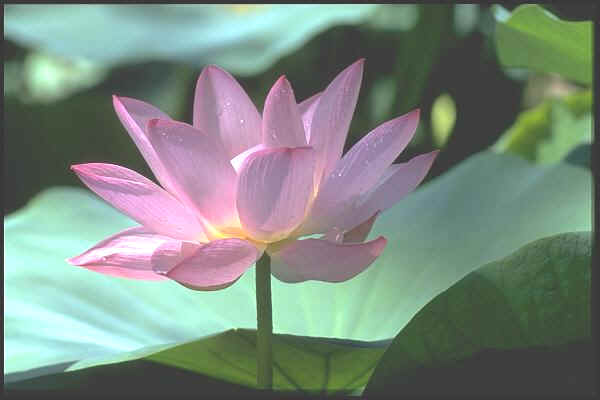|
|
||
|
|
Buddhism is a philosophical 'way of life', a religion which is based on the practice of discipline according to Buddha Siddharta Gotama who lived some 2500 years ago. The word root of Buddha is 'budh' derives from Sanskrit meaning 'to awake', hence Buddha denote an 'Enlightened Being' or 'The Awaken' - one who has attained, by his own personal efforts and merit, the pinnacle of intellect and divine knowledge.
It is a religion of reason and meditation and it's final goal is Deliverance, meaning the Liberation of the Self from the cycle of birth, old age, disease and death. Buddhsm can be summed up as: (1) to lead a moral life, Buddhism has been described as a very pragmatic religion. It does not indulge in metaphysical speculation about first causes; there is no theology, no worship of a deity or deification of the Buddha. Buddhism takes a very straightforward look at our human condition; nothing is based on wishful thinking, at all. Everything that the Buddha taught was based on his own observation of the way things are. Everything that he taught can be verified by our own observation of the way things are. -Source of Buddhanet.net Historically, Buddha is referred to
Siddharta Gotama who founded Buddhism. The young prince grew up in the midst of luxury and splendor and at the age of 16 was married. He led a blissful life unaware of the ever changing nature and misfortunes of life outside the palace for another 13 years. At 29, he realized that wealth and luxury did not guarantee happiness, after witnessing sights which marked the turning point of the world. The sights he saw are first a weak and frail old man leaning on a staff, next a diseased person, then a corpse and finally a shaven -headed hermit in yellow robe moving with a peaceful and serene countenance. The first 3 sights showed him the inexorable nature of life, the universal ailments of humanity while the fourth showed the means to overcome the ills of life and to attain calm and peace. Realizing this he left the luxury in search of the Truth and Eternal Peace. He explored the different teachings religions, practiced extreme asceticism and philosophies of the day, to find the key to human happiness. After six years of study and meditation he finally found 'the middle path' and was enlightened. After enlightenment, the Buddha spent the rest of his life teaching the principles of Buddhism - called the Dhamma, or Truth to the regions of India and wandering until his passing at the age of 80. He was not, nor did he claim to be a God. He was a man who taught a path to enlightenment from his own experience. The Supreme Enlightenment Siddharta gave up the practice of
extreme asceticism after years of without any progress in seeking the
Truth. However he has not given up the effort of finding the truth. One
day, in Buddha Gaya, he sat down in lotus position and meditated in search
of the truth. His mind soon became tranquil and purified after years of practice
and attained Samadhi peace. During the meditative trances, his mind was able to gained the sight or knowledge of all his past lives, thus acquired the 'human divine eye'. He envisaged the passing away and rebirth of all living beings of all times like the whole universe appearing before a mirror. He saw that the karma forces in work. Finally thru the meditative trances, he reached the highest state of 'outflows' of his life, his ignorance and cravings of his emotion have finally quelled and thus achieved Enlightenment. Thus achieved Nibbana. It was then that he perceived the cause to ignorant life and also the Four Noble of Truths of the way to achieve enlightenment, hence he was known as Buddha Sakyamuni (Sage of the Sakya Clan Buddha). The Meaning of Nibbana Most people have heard of nirvana (nibbana). It has become equated with a sort of eastern version of heaven. Actually, nibbana simply means cessation. It is the cessation of passion, aggression and ignorance; the cessation of the struggle to prove our existence to the world, to survive. Once it is overcome a state of bliss is achieved. The Buddha described Nibbana as the ultimate goal, and he reached that state during his enlightenment. Thus, at the age of 80, ended the life of Buddha and his passing into parinirvana (completed nirvana),to a state of formless being, eternal peace and life, free from karma debt and the cycle of rebirth. (to be detailed in the cosmology of Buddhism) The Buddha refused to be drawn on what occurred then, but implied that it was beyond word and without boundaries. Certainly, he saw it in a much different state than our current existence, and not a simple parallel to the process of individual rebirth |
|
|
Previous Next
|
||
|
|
||

 He was born in 563 BC in Lumbini to the royal family rulers of Sakya
Kingdom in the vicinity of Nepal. Prediction has it that the prince would
be a great ruler or Buddha and hence given the name of Siddharta meaning
'One Whose Aim is Accomplished'
He was born in 563 BC in Lumbini to the royal family rulers of Sakya
Kingdom in the vicinity of Nepal. Prediction has it that the prince would
be a great ruler or Buddha and hence given the name of Siddharta meaning
'One Whose Aim is Accomplished' 

